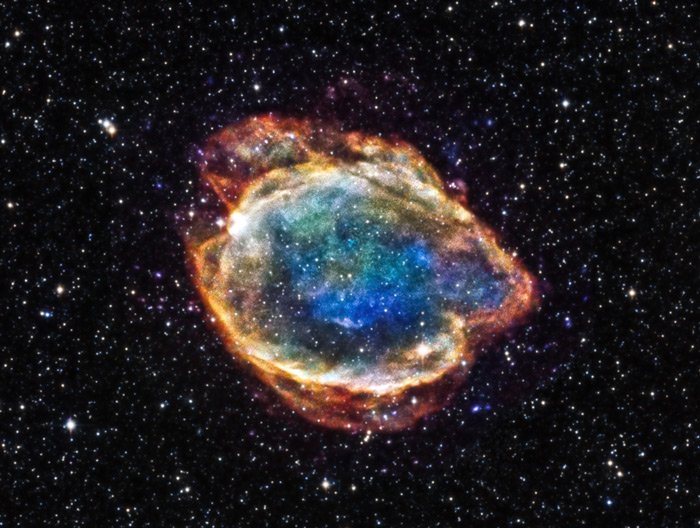There is research from Michigan State University that exploding stars will create faster life-giving carbon atoms. It is faster than what they think first. The discovery brings the scientists to reveal the mystery they leave, related to the elements creation theories, and also new science in fusion and astronomy areas.
Carbon is one of the main elements of Earth. It explodes Supernova stars by creating the triple alphas fusion reaction. The “alpha” means a helium atom core that is created from two neutrons and two protons. When the three elements are fused, you will have carbons that consist of six electrons, six neutrons, and also six protons.
The reaction of the fusion is not that efficient, but there will be something that will help it. The researchers use supercomputer models to see the excess protons in its innermost become a supernova can trigger a triple alphas fusion reaction. The strength is 10 times stronger than the general carbon atoms we have.
This results in the number of carbon in the universe. Yet, for researchers, it leads to another question. They previously think that excess protons were used to create certain heavier molybdenum and ruthenium isotopes that are found on Earth. These elements cannot be created in other places, unless through Supernova, as an MSU professor said.
If it’s not the Supernova stars, the isotopes are then generated from other ways, but they don’t know how yet. They have alternatives, but it’s not easy to come up with one of them and destroy their theories. Thus, this might be the birth of new science.
Supernova Stars Facts
Some stars are not fading, they’re burnt. It ends their evolutions through Supernova, a massive cosmic explosion. When Supernova stars explode, the debris will get into space for around 25,000 miles per second. The blasts are not only produced carbons, but also some other materials like iron that is the component to make us and our planet. And for heavy elements, they are only made in Supernova. Thus, we carry those special elements that can only be produced through the stars’ explosion, in our bodies.
When stars explode, they produce clouds of gas and dust to space, and then to interstellar diversity. In further, the clouds create a shock wave that will compress the clouds of gas to form new stars. Yet, not all stars are formed into Supernova stars. Some are cold and end their lives as black dwarfs or white dwarfs.
Yet, some stars are even larger than the sun. And these kinds of stars will create a Supernova star when the fusion process in the core runs out of their fuel. Fusion will create pressure, and when it slows down, the core of the star will start to condense under the gravity. It will then be hotter and denser.
Impacts of Supernova
When Supernova stars happen, there will be several impacts in space, and also on Earth, if it happens near Earth. It gives us obvious effects on the Earth’s biosphere. Yet, it depends on the energy and type of Supernova you have. Yet, it is interesting that the Supernova explosion can be 3000 light-years away. The Supernova signature was seen on Earth in 1996, in metal isotope form signature. Another finding was reported in the Pacific Ocean.
Supernovae can be dangerous if they explode close to the Earth, it is called Type Ia Supernovae.
This type of Supernova arises from the white dwarf star and can affect the Earth, and the effect on both the star system and the Earth isn’t well studied. The closest star that can be the candidate of Supernova stars is IK Pegasi. And the researchers estimate that there will be Supernova Type II happening if it’s 26 light-years away from the Earth. It can result in the loss of the Earth’s ozone layer. And fortunately, the closest candidate is even more than 500 light-years.
Another impact of the explosion of Supernova stars is gravitational waves. Yet, so far, there is no report about the gravitational waves caused by the Supernova. The only waves that Earth experiences is from the fusion of neutron stars and black holes. Cosmic rays is another impact. Yet, the production of cosmic rays caused by space events was found only in a small number. From the Supernova W44 and IC 443 remnants, gamma rays are detected. The rays exist when the SNR accelerates protons that create effects on interstellar material.
For notes, it is speculative when we talk about the closest candidates to be the next Supernova. Further research to have an exact timescale and mechanism are needed.
